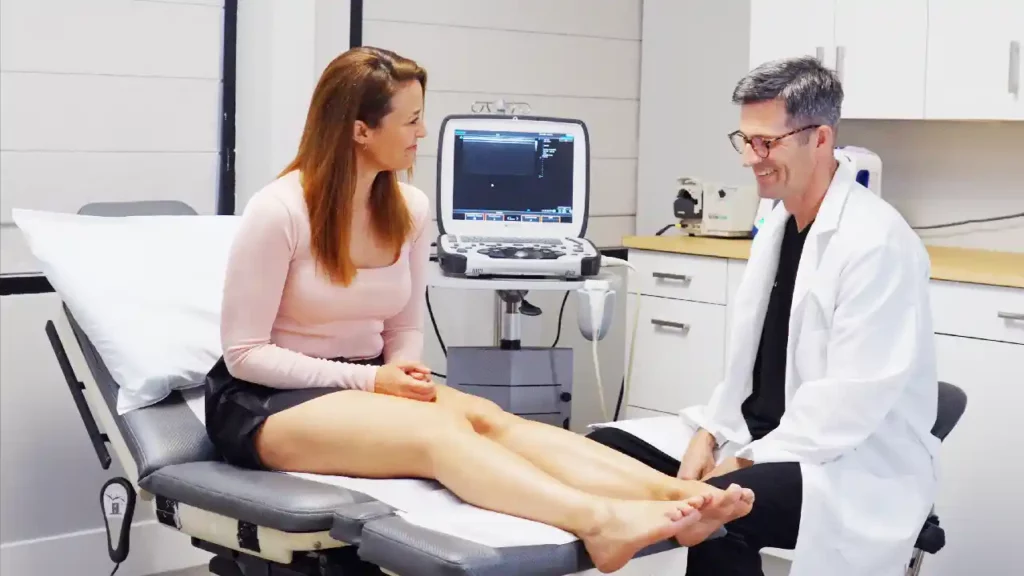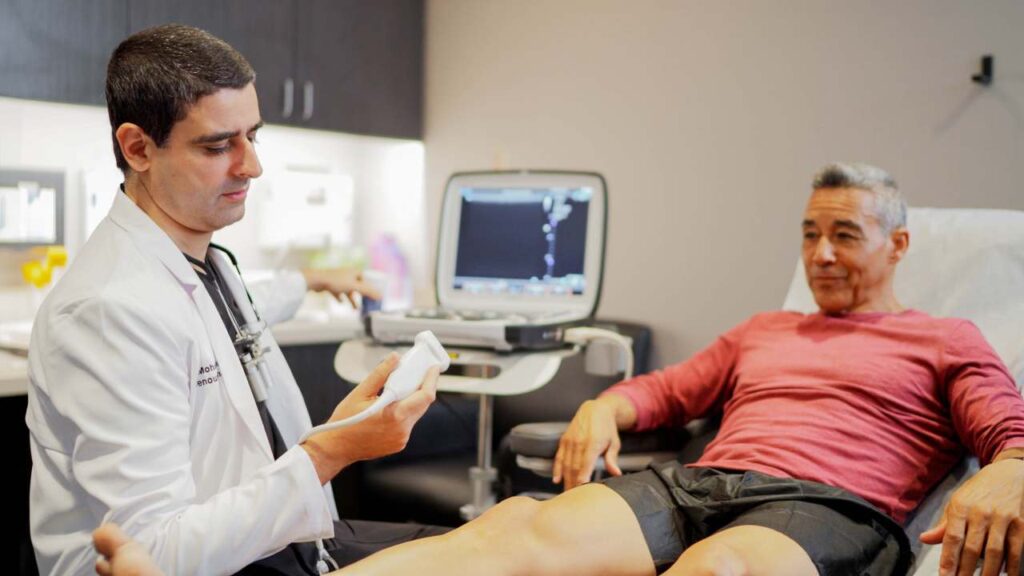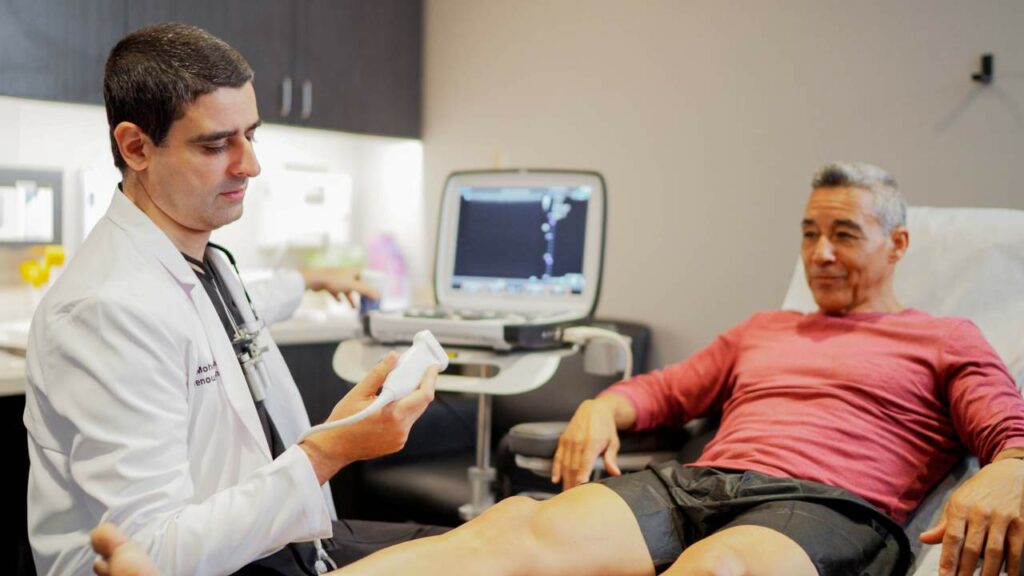Varicose Vein Treatment Plan in California
Vein Treatment Clinic is a reputable medical center known for exceptional minimally invasive varicose vein treatments. Instead of simply treating the visible spider veins and varicose veins, our vein doctors investigate the root cause of your vein problems and curate an individualized treatment plan. Our comprehensive vein care approach ensures optimal and lasting results. Furthermore, we only provide minimally invasive vein treatments with a perfect success rate, cause no complications, and conclude within an hour with no downtime. Our state-of-the-art vein clinic is located at 5330 Carroll Canyon Rd Suite 140, a short drive from the lovely Torrey Pines beach state park in La Jolla. You may schedule an appointment online or call us at +1 858-461-7886 to discuss your vein treatment options.
Our considered and individualized approach to vein treatments allows us to maintain a perfect track record, as evidenced by our 5-star ratings and reviews. One of our patients recently wrote, “Dr. Billy and his staff are wonderful, and I have always felt comfortable at my appointments. Dr. Billy explains everything he does as he is doing it and is very thorough. I had a very difficult set of veins that felt like ropes on the outside, twisting in many different directions. Amazingly, he got through to each one, which was no easy task as I could see on the screen. After taking care of the veins inside my legs that weren’t flowing properly, making my legs feel tired and achy, and the horrible looking ones that protruded from my legs in several areas, I look and feel so much better! I can’t thank him and his staff enough for the excellent care!”
#1. Radiofrequency Ablation
Radiofrequency ablation is a minimally invasive vein treatment that addresses the underlying venous insufficiency. The vein doctor administers local anesthesia to make a small incision on the skin’s surface. The incision is used as an entry point to drive an ultrasound-guided catheter into the diseased saphenous vein responsible for your vein problems. Once lodged in place, the vein doctor applies local anesthesia to the diseased vein’s walls. The catheter is activated to deliver thermal energy to the diseased vein, making it shut down. The accumulated blood reroutes to healthier leg veins, restoring effective blood circulation to the heart.
Radiofrequency ablation causes no pain or discomfort, has a negligible risk of complications and concludes within 30 minutes with no downtime. It’s a medically necessary procedure and, as such, covered by most insurance plans.
#2. Endovenous Laser Ablation
Endovenous laser ablation is a minimally invasive vein treatment that addresses the underlying venous insufficiency. The vein doctor administers local anesthesia to make a small incision on the skin’s surface. The incision is used as an entry point to drive an ultrasound-guided endovenous laser into the affected saphenous vein responsible for your vein problems. Once the endovenous laser is inside, the vein doctor delivers local anesthesia to the diseased vein’s walls. The endovenous laser is activated to deliver laser energy to the diseased vein, making it shut down. The accumulated blood reroutes to healthier leg veins, restoring effective blood circulation to the heart.
Endovenous laser ablation has a negligible risk of complications and concludes within 30 minutes with no downtime. However, it causes a little more discomfort than radiofrequency ablation after the treatment. Endovenous laser ablation is a medically necessary procedure and, as such, is covered by most insurance plans.
#3. VenaSeal
VenaSeal is an FDA-approved medical adhesive that treats the underlying venous insufficiency. The vein doctor administers local anesthesia and injects a special vein glue into the diseased saphenous vein under ultrasound guidance. The diseased vein’s walls seal shut, and the accumulated blood reroutes to healthier leg veins, restoring effective blood circulation to the heart.
VenaSeal is a safe and comfortable procedure with a negligible risk of complications. The procedure concludes within 30 minutes with no downtime. However, VenaSeal isn’t covered by all insurance plans because it’s a relatively new procedure.
#4. Ambulatory Phlebectomy
Ambulatory phlebectomy is a minimally invasive treatment for superficial varicose veins. The vein doctor makes numerous small incisions on the skin’s surface to remove the small varicose veins from the skin’s surface. The incision marks gradually heal and turn into scars that slowly fade away.
Ambulatory phlebectomy is only suitable for patients with small varicose veins without underlying vein disease or after the primary vein treatment. It’s not covered by insurance plans because it’s considered a cosmetic treatment.
#5. Sclerotherapy
Sclerotherapy is a minimally invasive spider vein treatment. The vein doctor injects a sclerosing solution to make the spider veins shrink and turn into scar tissues that eventually get absorbed by the body. The spider veins on your skin’s surface eventually fade away over 2 to 3 weeks as the hardened scar tissues are metabolized. The number of sclerotherapy sessions necessary for optimal results will depend on your specific goals and concerns — your vein doctor will recommend the ideal treatment frequency.
Sclerotherapy isn’t covered by most insurance plans because it’s a cosmetic treatment. However, some vein doctors find a way to extend coverage to this procedure if you have underlying vein disease. Please discuss your insurance coverage options for sclerotherapy with your vein doctor.





